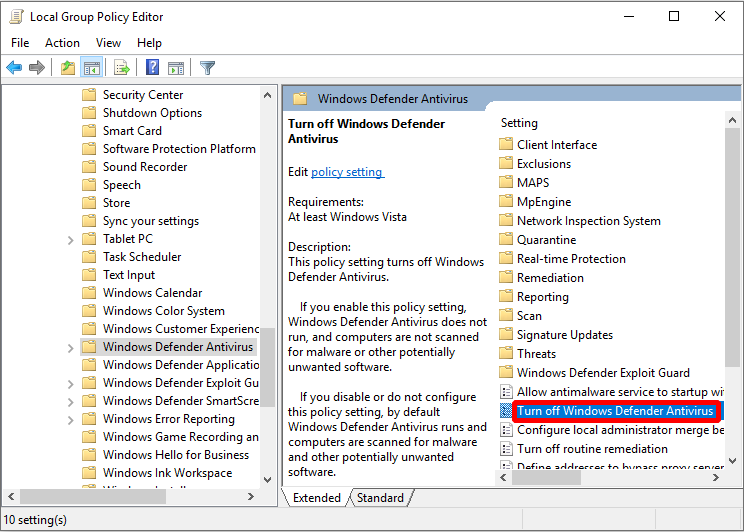
The Windows Defender desktop program is still there, named Windows Defender Antivirus, but all settings are now inside this modern application interface.Ĭomparison of settings and functions of the old Windows Defender and the new Windows Defender interface.Īll of the previous functions and settings from the Windows Defender (Windows 10 before version 1703) are now found in the new Windows Defender Security Center interface. The anti-virus software running in the background? Tell us more about yourĮxperience in the comments section below.Windows 10 Creators Update build 1703 and Higher (published in April 2017) introduces the new Windows Defender Security Center interface. Tedious, this action requires very little advanced knowledge of the system.ĭo you want to disable Windows Defender? Did you notice your PC is slower with Windows Defender entirely takes more than a few steps indeed. If so, repeat the steps from above to turn it off. The changes in the name do not affect the actions or required steps to disableĪfter a significant software update, the Defender might turn back on. Of May 2020, Windows Defender is known as Windows Defender Antivirus. Then, locate the DisableAntiSpywre key, and delete it from Re-enable the Defender from Windows Registry, repeat the steps from the It’s OK as long as you’re using some third-party solution. Windows Defender disables native anti-virus protection on your computer. Then, select the Value Data box and change the value to 1.

Type DisableAntiSpyware under Value Name, and hit Enter. Once there, right-click Windows Defender (it’s a folder), choose New, then select DWORD (32-bit) Value.

HKEY_LOCAL_MACHINE\SOFTWARE\Policies\Microsoft\Windows

Step 2Īccess the first option that pops up. That’s why it’s not advisable to try to turn off Tamper Protection using the key.

You can easily control this key, but it’s quite tricky to modify it. HKEY_LOCAL_MACHINE\SOFTWARE\Microsoft\Windows


 0 kommentar(er)
0 kommentar(er)
